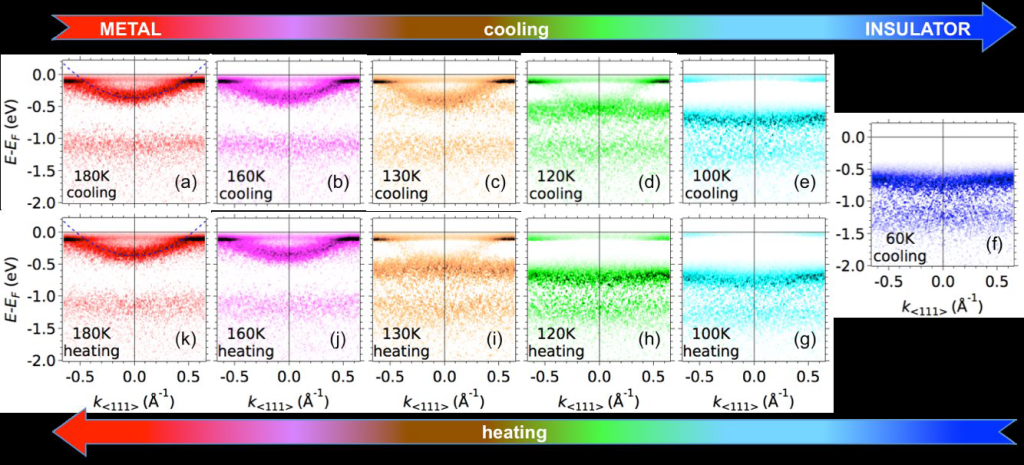In systems with strongly interacting fermions, the competition between the different degrees of freedom leads to competing quantum ground states, from which a rich variety of macroscopic phenomena emerge. In many cases, these phenomena arise from phase transitions described by exotic (or even unknown) order parameters and underlying novel states of matter. As such, the physics of strongly-interacting fermions is the common thread in several challenging open problems.
The metal-to-insulator transition in V2O3 provides an illustrative example of this phenomenon.

In solids, strong repulsion between electrons can inhibit their movement and result in a “Mott” metal-to-insulator transition (MIT), a fundamental phenomenon whose understanding has remained a challenge for over 50 years. A key issue is how the wave-like itinerant electrons change into a localized-like state due to increased interactions. However, observing the MIT in terms of the energy- and momentum-resolved electronic structure of the system, the only direct way to probe both itinerant and localized states, has been elusive. In a recent work our group showed, using angle-resolved photoemission spectroscopy (ARPES), that in V2O3 the temperature-induced MIT is characterized by the progressive disappearance of its itinerant conduction band, without any change in its energy-momentum dispersion, and the simultaneous shift to larger binding energies of a quasi-localized state initially located near the Fermi level.
Article: Maximilian Thees, Min-Han Lee, Rosa Luca Bouwmeester, Pedro H. Rezende-Gonçalves, Emma David, Alexandre Zimmers, Franck Fortuna, Emmanouil Frantzeskakis, Nicolas M. Vargas, Yoav Kalcheim, Patrick Le Fèvre, Koji Horiba, Hiroshi Kumigashira, Silke Biermann, Juan Trastoy, Marcelo J. Rozenberg, Ivan K. Schuller, Andrés F. Santander-Syro, « Imaging the itinerant-to-localized transmutation of electrons across the metal-to-insulator transition in V2O3« , Science Advances, 7, abj1164 (2021)